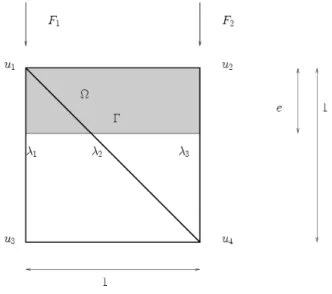Imposing essential boundary conditions in the eXtended Finite Element Method
Texte intégral
Figure



Documents relatifs
Here, Assumption (1.5) is necessary to give a meaning of the boundary condition u 3 = g 3 on Γ in (1.7), see Proposition 6.2, and to build a lifting operator of boundary values
L’archive ouverte pluridisciplinaire HAL, est destinée au dépôt et à la diffusion de documents scientifiques de niveau recherche, publiés ou non, émanant des
In Section 2, we recall the main finite-volume notation, for example used in [4], that we adapt to our problem with a curved domain and dynamic boundary conditions.. In Section 3,
The main steps towards the derivation of enrichment functions are as follows: (1) extension of the subfields separated by the interface to the whole element domain and definition
In works such as [11,16,17,19,24,29], a part of the analysis relies on the construction of 0-forms (i.e. functions) quasi-modes supported in some characteristic wells of the potential
This article is copyrighted as indicated in the article. Reuse of AIP content is subject to the terms at: http://scitation.aip.org/termsconditions. Downloaded to IP:.. Wang and
This work is concerned with the reconstruction of the shape of cracks with impedance boundary conditions in a homogeneous background from acoustic measurements using the so-
In this paper, we are interested in the minimization of the second eigen- value of the Laplacian with Dirichlet boundary conditions amongst convex plane domains with given area..